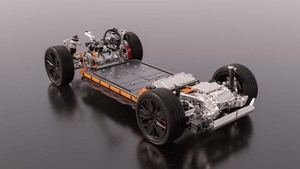The Tesla Model 3 (as an example) is starting to show that the TCO cost of ICE v EV has hit the EV tipping point and this model in particular is starting to make waves in the corporate fleet world.
When we run the numbers and show them to our clients, the fleet managers start to realise that the electric vehicle offers some significant advantages. Range has long been a limiting factor for corporate fleets to go electric, but Model 3 and several EVs have made this a thing of the past.
When you analyse the data, TCO and driver behaviour, the need to convince fleets to go electric starts to disappear. The resulting discussion then is how to implement this into a car policy strategy. Once a fleet manager understands the driving pattern of their drivers, they are easily able to offer EV as a choice. As the EV tipping point changes favourably, more and more drivers are wanting to make the switch from an existing ICE choice list.
Total cost of ownership example
TCO analysis is showing the change in the EV tipping point. Without going in to too much detail, the simplifed TCO model is a robust and known method for calculating the ‘real costs’ of fleet in the countries fleets operate. These include direct and indirect costs of a vehicle.
Direct Costs
Typical these include: depreciation, interest, vehicle repair and maintenance, tyres, fuel consumption, insurance, tax and fleet management fees. The same car in a different country will have different costs due to local taxation. In general, taxation cost of an EV is less than an ICE vehicle.
Indirect Costs
These are harder to quantify but also have an impact on fleet costs. These are typically fleet management admin/process cost and driver behaviour which can significantly increase fuel cost for example.
Lets looks at a typical fleet car on a 48 month / 25,000km per year lease in Belgium. A VW GOLF 1.5 TSI 96kW (113g) compared to a Golf-e. The TCO monthly lease rate is €780,21 versus €725,45. A saving of €54.76 (7%). When you look at the entire fleet, huge savings can be made along with BIK savings for drivers. In general, although the lease cost of an EV is still higher, this is being (over) compensated by a lower fuel cost and lower taxation cost. A TCO model per country can be developed to compare apples to apples.
Bart Vanham
Legislation changes are also driving the EV tipping point. For example, in the UK, from 6th April 2020, EV vehicles are eligible for a 0 percent BiK rate for the 2020/21 tax year. (rising 1 percent in 2021/22 and to 2 percent in 2022/23, being held at 2% for 2024/24 & 2024/25.) The average petrol or diesel vehicle has a BiK rate of 20 to 37 percent.
Your CSR considerations
As we have discussed previously, Europe is seeing an increase in vehicle C02 emissions due partly to a decline in diesel demand and a switch to SUV’s. Switching to an electric fleet is one of the simplest ways for companies to reduce CO2 emissions and does not require a very drastic change in strategy. The implementation of EV and infrastructure requires a well thought-out approach based on use, environment, costs, evolutions and energy aspects.
What is your EV tipping point?
We have helped many companies recently understand the changing fleet landscape and the true impact of EV on fleets. Now more than ever do companies need to rethink their vehicle policy and now could be the right time to make the switch to EV and help reduce fleet cost as we enter uncertain times. Get in touch for a chat to see how we can help you make sense of it all.




